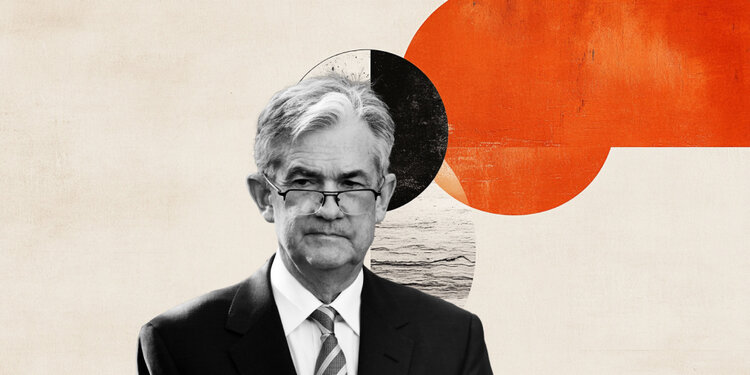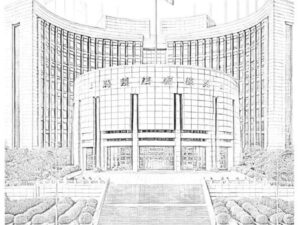It’s not a bad economy

At the post-meeting press conference, Fed Chair Jerome Powell explained the decision to lower the Federal Funds Target Range (FFTR) to 4.00%–4.25% after the September meeting and fielded questions from reporters.
https://www.youtube.com/watch?v=oQ246jra6cM
Powell’s press conference takeaways
Inflation has risen recently and remains somewhat elevated.
Moderation in GDP growth largely reflects consumer spending slowdown.
Payroll job gains have slowed significantly, reflecting lower immigration and lower participation.
Labour demand has softened.
Job gains are running below the breakeven rate.
Inflation has eased from mid-2022 highs, but somewhat elevated.
Total PCE prices likely rose 2.7% in August from a year ago, core PCE rose 2.9%.
Inflation for goods has picked up, disinflation for services continuing.
Beyond next year, most inflation-expectation measures are consistent with the 2% goal.
Changes to policy evolve; effects on the economy are uncertain.
Overall effect of tariffs on inflation remains to be seen.
Risk of persistent inflation from tariffs needs to be managed and assessed.
Balance of risks has shifted.
Well-positioned to respond in a timely way.
Possible tariffs are a reason for some slowing in the labour market.
Increase in goods prices accounts for most of the inflation increase this year.
Expect tariff-driven price increases to continue this year and next.
Labour market changes are mostly from immigration changes.
Demand for labour is down a little more sharply than supply of labour.
Over this year policy has been at a restrictive level.
Can no longer say labor market is solid.
Risks are moving toward equality.
Change in balance of risks suggests need to move in direction of neutral.
No widespread support for 50 bps cut today.
Don’t feel need to move quickly on rates.
Could think of today’s cut as a risk management cut.
A very different picture of risks to the labour market since the last Fed meeting.
The labour market is cooling off, which tells you it’s time to take that into account in policy.
We need to remain fully committed to restoring 2% inflation.
At the same time, we need to weigh risks to two Fed goals.
Risk of higher inflation is less than it was in April.
Not all of what is happening in the labour market is due to immigration; there’s a clear slowing in demand.
See inflation rising this year as goods prices rise from tariffs; expect it to be a one-time rise.
Our job is to make sure it is a one-time rise in inflation, and we will do that job.
Cases for there being a persistent inflation outbreak are fewer.
Time to acknowledge the risks to the employment mandate have grown.
The only way for one voter to move things around is to be persuasive, based on the data.
That’s how it is going to work.
We are going to do everything we can to use tools to achieve goals.
There’s a wide assessment that the situation has changed with respect to the labour market.
New data suggest there is meaningful downside risk to the labour market; that’s broadly accepted.
Almost everyone wrote down support of this cut.
It’s not a bad economy.
From a policy standpoint it’s challenging to know what to do.
It’s not incredibly obvious what to do.
Need to keep an eye on two equal goals.
This speedy decline in both supply and demand for labour has got everyone’s attention.
Gratifying to see that economic activity is holding, a good bit like consumption.
It’s the risks to the labour market that were the focus of today’s decision.
This section below was published at 18:00 GMT to cover the Federal Reserve’s policy decisions and the immediate market reaction.
At its September meeting, the Federal Reserve lowered the Federal Funds Target Range (FFTR) by 25 basis points to 4.00%–4.25%, a move that came squarely in line with market expectations.
Highlights from the FOMC statement
Projections show additional 50 bps of cuts by year end, another 25 bps of cuts in each of the next two years.
Job gains have slowed, unemployment has edged up but remains low.
Inflation has moved up and remains ‘somewhat elevated’.
Economic growth moderated over first half of this year.
Says it is attentive to both sides of dual mandate.
Maintains current pace of balance sheet drawdown.
Officials’ median view of Fed funds rate at end-2025 3.6% (prev 3.9%).
Officials’ median view of Fed funds rate at end-2027 3.1% (prev 3.4%).
Officials’ median view of Fed funds rate at end-2026 3.4% (prev 3.6%).
Officials’ median view of Fed funds rate at end-2028 3.1%.
Officials’ median view of Fed funds rate in longer run 3.0% (prev 3.0%).
Projections imply additional 50 bps of rate cuts in 2025, 25 bps in 2026 and 25 bps in 2027.
Projections show 9 of 19 officials see two additional cuts in 2025, two see one cut, six see no more reductions.
Policymakers see 4.5% unemployment rate at end of 2025 versus 4.5% in June projections.
Projections show one policymaker estimated the appropriate policy rate for year end at 4.25%-4.50%, one saw it at 2.75%-3.00%.
Policymakers see end-2025 PCE inflation at 3.0% versus 3.0% in June; core seen at 3.1% versus 3.1%.
Policymakers see 1.6% GDP growth in 2025 versus 1.4% in June, see longer-run growth at 1.8% vs 1.8% in June.
Market reaction to Fed policy announcements
The Greenback sells off to fresh lows, dragging the US Dollar Index (DXY) to the 96.20 region.
US Dollar Price Today
The table below shows the percentage change of US Dollar (USD) against listed major currencies today. US Dollar was the strongest against the Canadian Dollar.
| USD | EUR | GBP | JPY | CAD | AUD | NZD | CHF | |
|---|---|---|---|---|---|---|---|---|
| USD | -0.22% | -0.34% | -0.51% | 0.04% | -0.11% | -0.15% | -0.24% | |
| EUR | 0.22% | -0.14% | -0.24% | 0.28% | 0.23% | 0.20% | -0.02% | |
| GBP | 0.34% | 0.14% | -0.10% | 0.41% | 0.21% | 0.20% | 0.03% | |
| JPY | 0.51% | 0.24% | 0.10% | 0.50% | 0.46% | 0.33% | 0.10% | |
| CAD | -0.04% | -0.28% | -0.41% | -0.50% | -0.08% | -0.13% | -0.30% | |
| AUD | 0.11% | -0.23% | -0.21% | -0.46% | 0.08% | -0.01% | -0.25% | |
| NZD | 0.15% | -0.20% | -0.20% | -0.33% | 0.13% | 0.00% | -0.20% | |
| CHF | 0.24% | 0.02% | -0.03% | -0.10% | 0.30% | 0.25% | 0.20% |
The heat map shows percentage changes of major currencies against each other. The base currency is picked from the left column, while the quote currency is picked from the top row. For example, if you pick the US Dollar from the left column and move along the horizontal line to the Japanese Yen, the percentage change displayed in the box will represent USD (base)/JPY (quote).
This section below was published at 10:00 GMT as a preview of the Federal Reserve’s policy announcements.
- The US Federal Reserve is expected to cut the policy rate for the first time in 2025.
- The revised Summary of Economic Projections, which includes the dot plot, could offer key clues about the policy outlook.
- The US Dollar faces a two-way risk on potential changes to the market pricing of the rate outlook.
The United States (US) Federal Reserve (Fed) will announce monetary policy decisions and publish the revised Summary of Economic Projections (SEP), the so-called dot plot, following the September policy meeting on Wednesday.
Follow our live coverage of the Fed rate decision and the market reaction.
Market participants widely anticipate the US central bank to cut the policy rate for the first time since last December, lowering it to the range of 4%-4.25%.
The CME FedWatch Tool shows that investors see only about a 6% chance of a bigger rate cut, while pricing in about an 80% probability of a total of 75-basis-point (bps) reduction for the remainder of the year. This means markets are expecting the Fed to slash interest rates by 25 bps in every meeting until year-end, barring an unexpected larger-than-usual cut.
The revised Summary of Economic Projections (SEP), published in June, showed that policymakers’ projections implied 50 bps of rate cuts in 2025 – less than what markets currently expect –, followed by 25 bps reduction in both 2026 and 2027. Seven of 19 Fed officials pencilled in no cuts in 2025, two of them saw one cut, while eight of them projected two and two of them forecast three cuts this year.
The new dot plot could bring significant changes for several reasons. First, since June, disappointing employment data and relatively stable inflation readings caused investors to lean toward a more dovish policy outlook. In his last public appearance at the annual Jackson Hole Symposium on August 22, Fed Chair Jerome Powell acknowledged that downside risks to the labor market were rising and noted that a reasonable base case was to expect that the inflation effects of tariffs will be short-lived.
Meanwhile, the US Bureau of Labor Statistics (BLS) reported that Nonfarm Payrolls rose by only 22,000 in August, while the Unemployment Rate edged higher to 4.3% from 4.2%. Furthermore, the BLS’ preliminary benchmark revision to the employment data showed that total Nonfarm employment for March 2025 was 911,000, or 0.6%, less than initially reported.
All these data suggest that the Fed mandate of supporting maximum employment may prevail over that of price stability even as inflation inches further away from its target.
“Future guidance is likely to lean dovish as a result of the recent weak labor reports, but not overly so given an inflation overshoot remains a key risk in the near to medium term,” said analysts at TD Securities. “We believe the SEP will reflect this, continuing to show two cuts in 2025 while shifting data projections in a slightly hawkish direction,” they added.
Another reason to expect some changes in the dot plot is political. Senate Republicans confirmed White House economic adviser Stephen Miran to join the Federal Reserve Board on Monday. Miran, who is seen as a dove with a potential to prefer a 50 bps cut, will be able to vote at the upcoming meeting.
Additionally, Fed Governors Michelle Bowman and Christopher Waller – a candidate to replace Chair Powell next year – could look to send a message by reflecting a dovish stance, as they did in July’s meeting. On the flip side, Governor Lisa Cook is expected to participate in the meeting after an appeals court rejected President Donald Trump’s bid to oust her.
Economic Indicator
Fed Interest Rate Decision
The Federal Reserve (Fed) deliberates on monetary policy and makes a decision on interest rates at eight pre-scheduled meetings per year. It has two mandates: to keep inflation at 2%, and to maintain full employment. Its main tool for achieving this is by setting interest rates – both at which it lends to banks and banks lend to each other. If it decides to hike rates, the US Dollar (USD) tends to strengthen as it attracts more foreign capital inflows. If it cuts rates, it tends to weaken the USD as capital drains out to countries offering higher returns. If rates are left unchanged, attention turns to the tone of the Federal Open Market Committee (FOMC) statement, and whether it is hawkish (expectant of higher future interest rates), or dovish (expectant of lower future rates).
Read more.
Next release:
Wed Sep 17, 2025 18:00
Frequency:
Irregular
Consensus:
4.25%
Previous:
4.5%
Source:
Federal Reserve
When will the Fed announce its interest rate decision and how could it affect EUR/USD?
The Fed is scheduled to announce its interest rate decision and publish the monetary policy statement, alongside the revised SEP, at 18:00 GMT. This will be followed by Fed Chair Jerome Powell’s press conference starting at 18:30 GMT.
There are several different scenarios to consider that could influence the US Dollar’s (USD) valuation in a significant way.
In case the Fed surprises markets with a 50 bps rate cut, the USD could come under heavy selling pressure with the immediate reaction. However, the USD could rebound right away if the reasoning behind such a decision suggests that the Fed wants to frontload the rate cut to buy time to analyze more inflation and employment data before taking another policy step. That, basically, would sharply decrease the chances of subsequent rate cuts.
In a different scenario, the Fed could go for a 25 bps cut as expected, but the USD could still weaken if the dot plot points to a dovish shift in the policy outlook, highlighting multiple rate cut projections next year.
Conversely, the USD could gather strength if the SEP shows only one or two rate cuts are forecast by Fed officials next year.
Market participants will also pay close attention to comments from Chair Powell in the post-meeting press conference. A concerned tone about the labor market outlook and growth prospects could be bearish for the USD, while a reiteration of inflation risks could support the currency.
Deutsche Bank analysts think that the median dot of the updated SEP will likely show 75 bps of total reductions for 2025, 25 bps more than in June.
“However, there is likely to be differing views within the committee. On the dovish side, there could be three calling for a 50bp cut and possibly one or two voting for no change. It has the potential to be the first meeting where three governors dissent since 1988, and the first with dissents on both sides since September 2019,” they add.
Eren Sengezer, European Session Lead Analyst at FXStreet, provides a short-term technical outlook for EUR/USD:
“EUR/USD clings to a slightly bullish stance in the near term. The Relative Strength Index (RSI) indicator on the daily chart holds above 50 as the pair trades above the 20-day and the 50-day Simple Moving Averages (SMAs).”
“On the upside, the first resistance level is located at 1.1830 (July 1 high) before EUR/USD could test 1.1900 (static level, round level) and 1.2000 (round level). Looking south, 1.1680-1.1660 (20-day SMA, 50-day SMA) aligns as a support region before 1.1540 (100-day SMA).”
Fed FAQs
Monetary policy in the US is shaped by the Federal Reserve (Fed). The Fed has two mandates: to achieve price stability and foster full employment. Its primary tool to achieve these goals is by adjusting interest rates.
When prices are rising too quickly and inflation is above the Fed’s 2% target, it raises interest rates, increasing borrowing costs throughout the economy. This results in a stronger US Dollar (USD) as it makes the US a more attractive place for international investors to park their money.
When inflation falls below 2% or the Unemployment Rate is too high, the Fed may lower interest rates to encourage borrowing, which weighs on the Greenback.
The Federal Reserve (Fed) holds eight policy meetings a year, where the Federal Open Market Committee (FOMC) assesses economic conditions and makes monetary policy decisions.
The FOMC is attended by twelve Fed officials – the seven members of the Board of Governors, the president of the Federal Reserve Bank of New York, and four of the remaining eleven regional Reserve Bank presidents, who serve one-year terms on a rotating basis.
In extreme situations, the Federal Reserve may resort to a policy named Quantitative Easing (QE). QE is the process by which the Fed substantially increases the flow of credit in a stuck financial system.
It is a non-standard policy measure used during crises or when inflation is extremely low. It was the Fed’s weapon of choice during the Great Financial Crisis in 2008. It involves the Fed printing more Dollars and using them to buy high grade bonds from financial institutions. QE usually weakens the US Dollar.
Quantitative tightening (QT) is the reverse process of QE, whereby the Federal Reserve stops buying bonds from financial institutions and does not reinvest the principal from the bonds it holds maturing, to purchase new bonds. It is usually positive for the value of the US Dollar.





